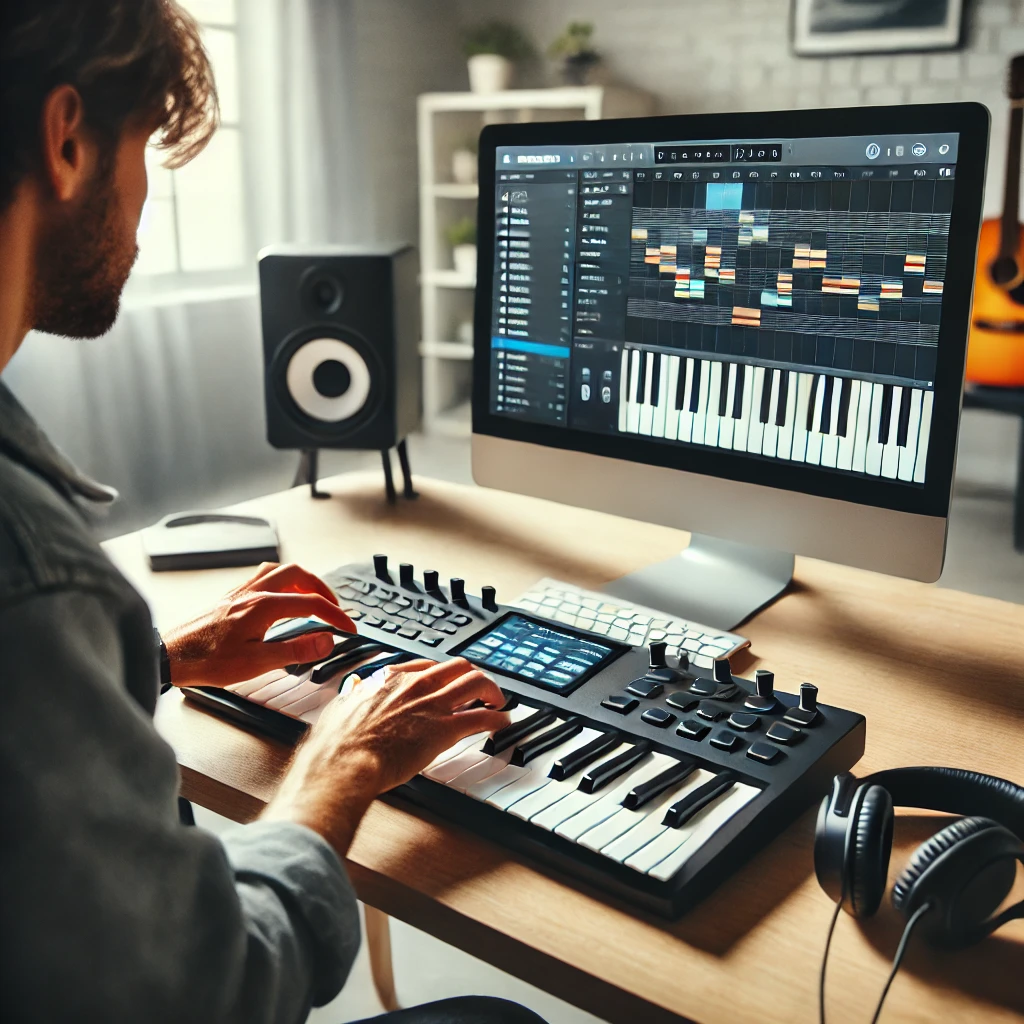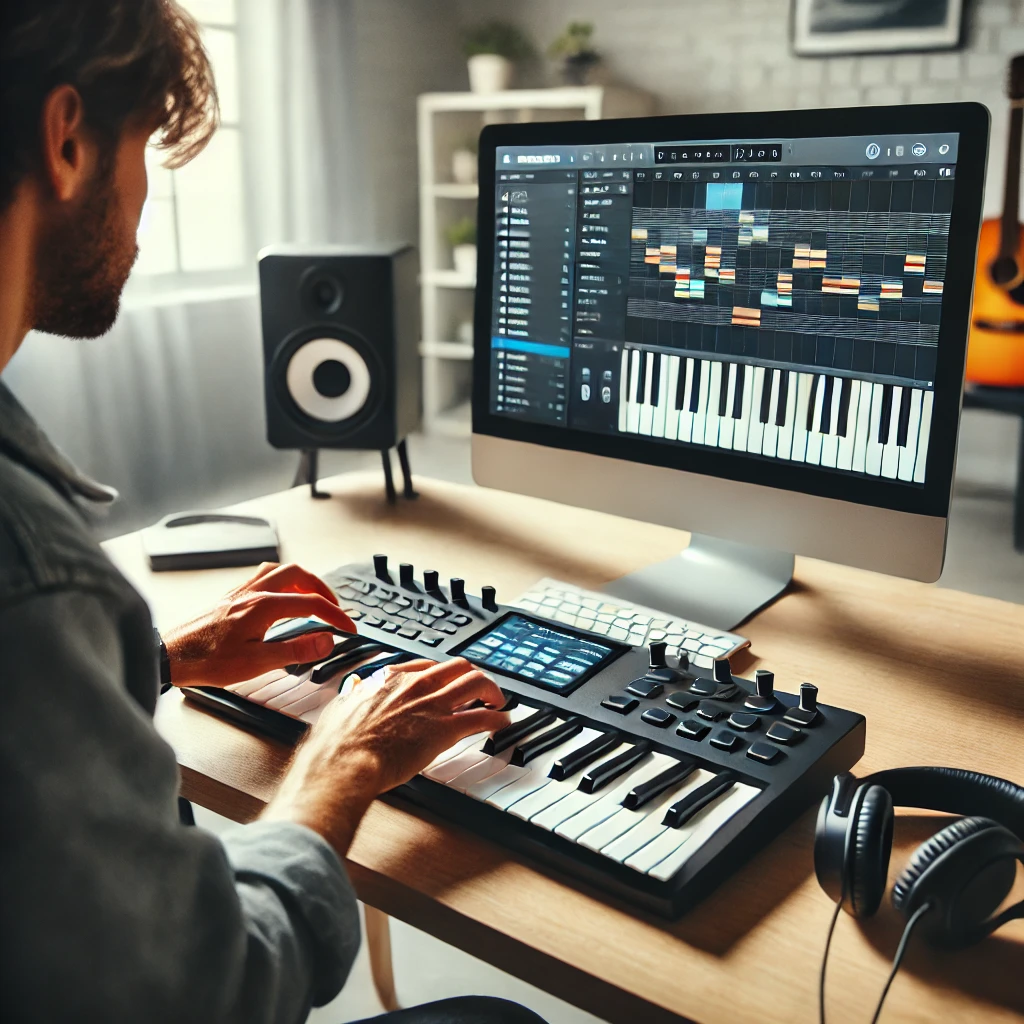Connect a Bluetooth MIDI Keyboard to MuseScore allows you to compose, play, and edit music with greater ease and flexibility. Whether you’re a beginner or a seasoned musician, using a Bluetooth MIDI keyboard can enhance your workflow and streamline your music creation process. MuseScore, a popular free music notation software, provides seamless integration with MIDI devices, enabling you to control virtual instruments, record melodies, and edit scores directly from your keyboard.
In this guide, we’ll walk you through the steps of connecting your Bluetooth MIDI Keyboard to MuseScore?, ensuring a smooth and hassle-free setup. From pairing your Bluetooth device with your computer to configuring the settings in MuseScore, we’ll cover everything you need to know to get started. Whether you’re composing a new piece or fine-tuning your arrangements, this connection will empower you to work faster and more intuitively, bringing your musical ideas to life with ease.
Why Use a Bluetooth MIDI Keyboard to MuseScore?

Using a Bluetooth MIDI Keyboard to MuseScore offers incredible flexibility and convenience. Here are some key benefits:
- Quickly Input Notes: Play your music directly on the keyboard, and see it appear on the score in MuseScore.
- Enhance Creativity: Experiment with melodies and chords in real time.
- Streamline Workflow: Spend less time clicking and more time composing.
- Portability: With no cables to worry about, Bluetooth MIDI keyboards are ideal for musicians on the go.
- Versatility: Switch between multiple devices with ease.
What You Need
Before you start Connect a Bluetooth MIDI Keyboard to MuseScore, ensure you have the following:
- A Bluetooth-enabled MIDI keyboard.
- A computer or tablet with Bluetooth capability.
- MuseScore installed (download the latest version from MuseScore.org).
- A stable internet connection for initial setup (if required).
- An understanding of your keyboard’s pairing process (refer to the user manual).
Step-by-Step Guide
Step 1: Turn on Your Bluetooth MIDI Keyboard
- Power on your MIDI keyboard and activate its Bluetooth pairing mode. Consult your keyboard’s manual for specific instructions.
Step 2: Pair Your Keyboard with Your Device
- Open the Bluetooth settings on your computer or tablet.
- Search for available devices.
- Select your MIDI keyboard from the list and click “Pair.”
- Confirm the connection by checking your device’s Bluetooth settings.
Step 3: Configure MuseScore to Recognize Your Bluetooth MIDI Keyboard
- Launch MuseScore.
- Go to Edit > Preferences (Windows/Linux) or MuseScore > Preferences (Mac).
- Navigate to the I/O tab.
- Under “MIDI Input,” select your Bluetooth MIDI keyboard.
- Click “OK” to save your settings.
Step 4: Test the Connection
- Open a new score in MuseScore.
- Press a few keys on your Bluetooth MIDI keyboard. If the setup is correct, the notes will appear on the score.
Advanced Features for Bluetooth MIDI Keyboard to MuseScore
Real-Time Note Input
MuseScore offers a real-time input mode, allowing you to play notes as they’re transcribed directly onto the score. Here’s how to enable it:
- Open a score in MuseScore.
- Click on the Note Input icon in the toolbar.
- Select Real-Time (Manual) Input or Real-Time (Automatic) Input.
- Begin playing your Bluetooth MIDI keyboard.
Customizing MIDI Channels
If your keyboard supports multiple MIDI channels, you can assign them to specific instruments in MuseScore. This is especially useful for orchestrations.
- Go to Edit > Preferences > I/O.
- Adjust the MIDI input channel settings as needed.
Adding Sustain Pedal Support
Ensure your sustain pedal is recognized by MuseScore:
- Connect the pedal to your Bluetooth MIDI keyboard.
- Press the pedal while playing notes and check its effect in MuseScore’s playback.
Troubleshooting Common Issues
When connecting a Bluetooth MIDI Keyboard to MuseScore, you may encounter challenges. Here’s how to address them:
- Keyboard Not Pairing: Ensure your keyboard is in pairing mode and within range. Check for any blinking indicator lights signaling pairing mode.
- Keyboard Not Recognized in MuseScore: Restart MuseScore after pairing the keyboard. Double-check the I/O settings.
- Latency Issues: Avoid crowded wireless environments and update your keyboard’s firmware.
- Notes Not Registering: Ensure your keyboard’s MIDI output is enabled and test it with other software to rule out hardware issues.
Pro Tips for Optimizing Bluetooth MIDI Keyboard to MuseScore Performance

- Keep Firmware Updated: Regularly update your keyboard’s firmware for better compatibility with MuseScore.
- Use a Stable Bluetooth Connection: For best results, use a device with Bluetooth 5.0 or higher.
- Experiment with Input Modes: MuseScore’s step-time and real-time modes offer different ways to input notes. Try both to find your preferred method.
- Save Your MIDI Settings: Save your configurations in MuseScore to avoid redoing the setup.
Creative Uses for Bluetooth MIDI Keyboard to MuseScore
- Live Scoring: Use real-time input to compose during rehearsals or live performances.
- Interactive Composing: Experiment with harmonies and counterpoint in real time.
- Teaching Tool: Demonstrate note input to students using your MIDI keyboard.
- Collaborative Projects: Share MuseScore files and make edits using your keyboard.
Frequently Asked Question’s
[sp_easyaccordion id=”4514″]
Conclusion
Connecting a Bluetooth MIDI Keyboard to MuseScore enhances your ability to compose, arrange, and experiment with music. By following this guide, you can unlock a smoother, more intuitive music creation process. Whether you’re composing a quick melody or orchestrating an entire symphony, integrating a Bluetooth MIDI Keyboard to MuseScore simplifies the journey.
Have questions or tips to share? Leave a comment below and let’s make music together!
Read More
- How to Unlock Ubisoft Connect’s Lost Crown Test Version and Recover Your Password Easily
- How to Set Up a Passkey for Papa John’s App
- How to Use Passkey for Easy Sign-In at Lowe’s on Desktop
- How to Set Up Passkeys
- How to Set the Hourly Alarm on the Casio DBC
- How to Connect Your Alienware m17 R4 to an LG C1 TV

